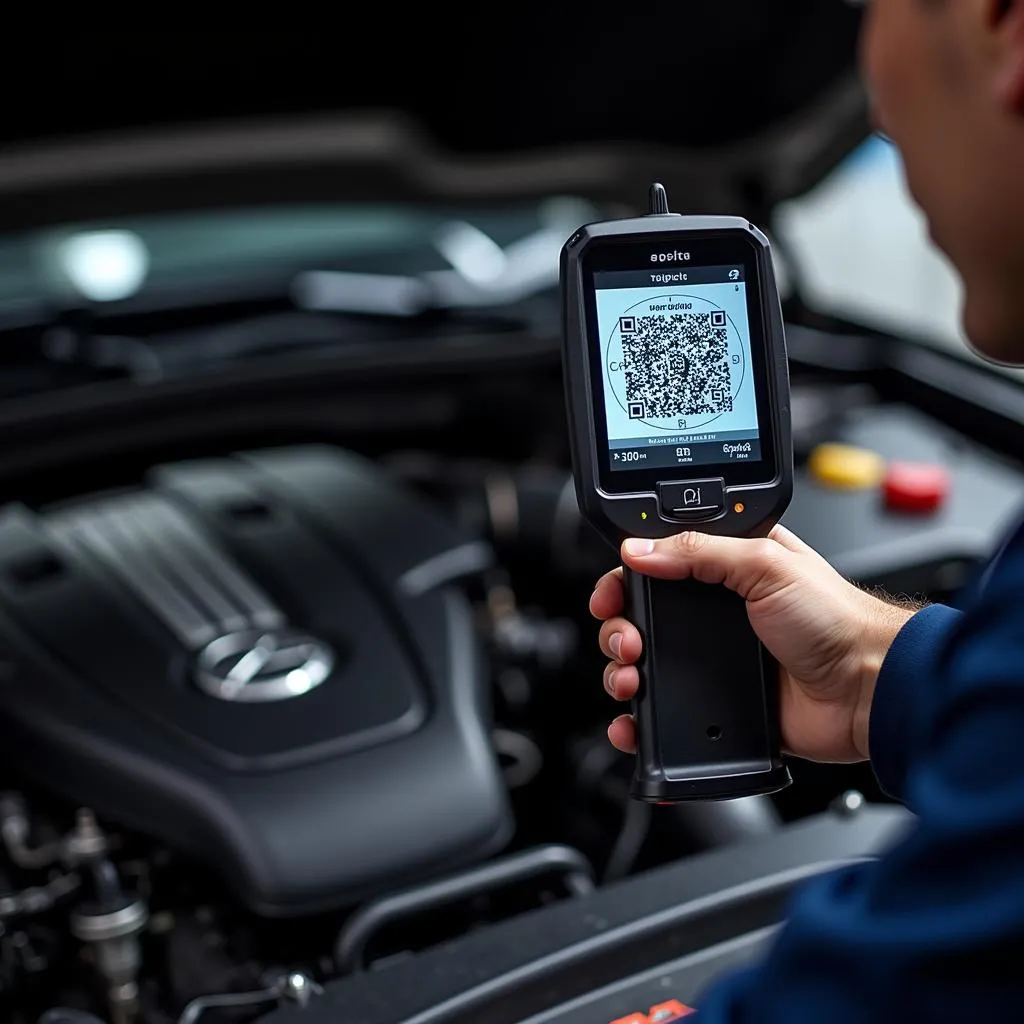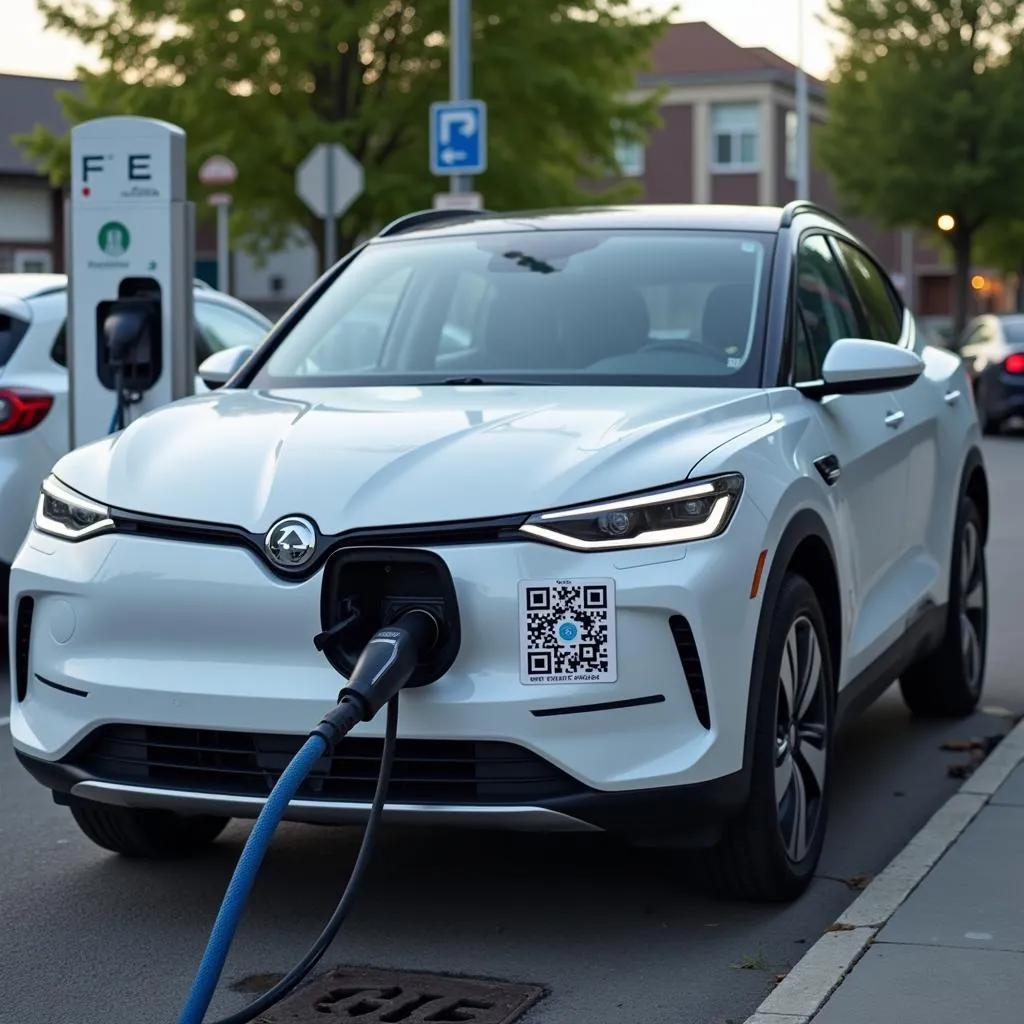QR code scanning is rapidly changing the landscape of automotive diagnostics, providing a quick and efficient way to access vehicle information. This technology allows technicians and car owners to retrieve data, troubleshoot issues, and perform maintenance with just a simple scan.
What is a QR Code Scan in Automotive Diagnostics?
A QR code scan, in the context of automotive diagnostics, involves using a smartphone or a dedicated scan tool to read a QR code displayed on the vehicle’s dashboard, under the hood, or on specific components. This code acts as a shortcut to a wealth of information about the vehicle, ranging from its VIN number and service history to specific diagnostic trouble codes (DTCs) stored in its onboard computer.
The Advantages of Using QR Code Scan for Car Diagnostics
 Technician scanning a QR code on a car dashboard
Technician scanning a QR code on a car dashboard
The integration of QR code scanning technology into automotive diagnostics offers numerous advantages:
- Speed and Efficiency: QR codes eliminate the need for manual data entry, which can be time-consuming and prone to errors. A quick scan provides immediate access to vital information.
- Enhanced Accuracy: By bypassing manual input, QR code scanning reduces the risk of human error, leading to more accurate diagnoses and repairs.
- Improved User Experience: The simplicity of QR code scanning makes it accessible to both professionals and car owners with varying levels of technical expertise.
- Real-Time Data Access: QR codes can link to live data streams, allowing technicians to monitor vehicle performance in real-time and identify issues more effectively.
Applications of QR Code Scan in the Automotive Industry
 Mechanic using a QR code scanner on a car engine
Mechanic using a QR code scanner on a car engine
The use of QR code scanning extends beyond basic diagnostics and is becoming increasingly prevalent across various automotive applications:
- Vehicle Identification: Scanning a QR code on the vehicle can instantly reveal its VIN, make, model, and year of manufacture.
- Service History Tracking: QR codes can store and provide access to a vehicle’s complete service history, including past repairs, maintenance records, and parts replacements.
- Parts Ordering and Inventory Management: Parts suppliers and repair shops can utilize QR codes for efficient inventory management, tracking, and ordering of components.
- Troubleshooting and Repair Guides: QR codes linked to online resources can provide technicians with step-by-step repair guides, wiring diagrams, and technical specifications for specific vehicles.
The Future of QR Code Scan in Automotive Diagnostics
 QR code displayed on an electric vehicle charging station
QR code displayed on an electric vehicle charging station
As technology continues to evolve, QR code scanning is poised to play an even more significant role in automotive diagnostics:
- Integration with Augmented Reality (AR): Imagine aiming your smartphone at a specific vehicle component and having an AR overlay provide real-time data, repair instructions, and even virtual guidance through the repair process.
- Predictive Maintenance: By analyzing data collected through QR code scans, coupled with machine learning algorithms, it will be possible to predict potential vehicle issues before they escalate.
- Connected Car Ecosystem: QR codes can serve as a secure gateway for accessing and managing various aspects of the connected car ecosystem, including remote diagnostics, software updates, and personalized driver settings.
Conclusion
QR code scanning is revolutionizing the way we approach automotive diagnostics, offering a faster, more accurate, and user-friendly approach. As the technology continues to advance, we can expect to see even more innovative applications emerge, further enhancing the efficiency, safety, and overall driving experience.